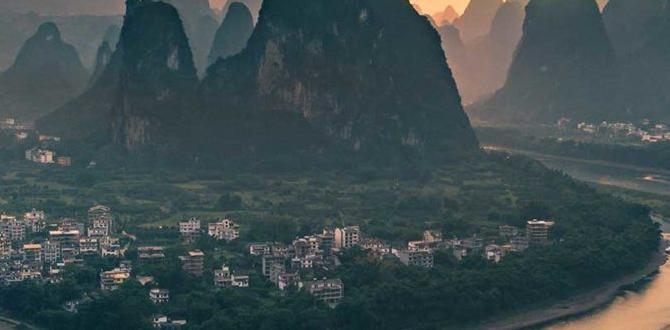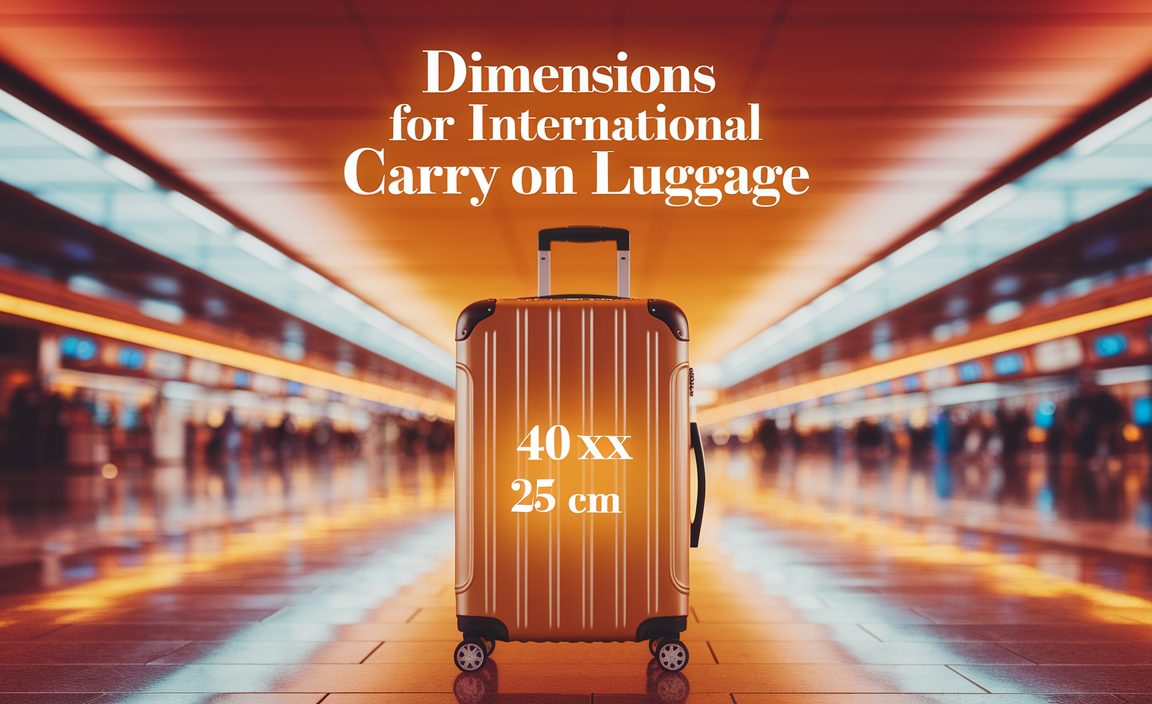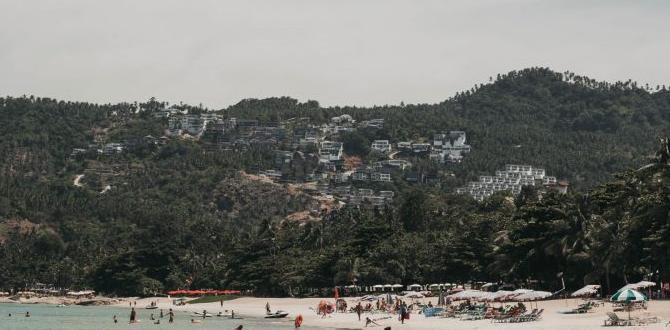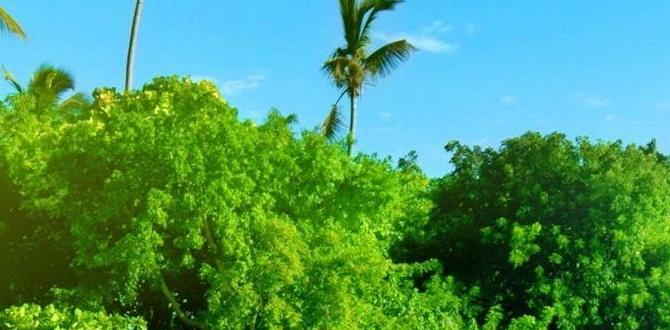Bangkok shoulder season is your key to vibrant experiences with fewer crowds and better prices. Plan smart by timing your visit, packing light for heat and humidity, and embracing flexible itineraries to enjoy this amazing city like a local.
Bangkok is a city that dazzles year-round, but planning your trip during the shoulder season can make it even more magical. You get to experience the best of what this incredible destination offers without the overwhelming crowds or the peak-season price tags.
This guide will walk you through everything you need to know to plan an unforgettable trip, ensuring comfort and convenience every step of the way. We’ll cover when to go, what to pack, and how to make the most of your adventure, promising a stress-free and utterly enjoyable experience.
What is Bangkok Shoulder Season?
Bangkok shoulder season refers to the periods just before and after the peak tourist season. These times offer a sweet spot, providing pleasant weather, fewer tourists, and more affordable travel options. It’s the perfect opportunity to explore the bustling streets, ornate temples, and vibrant markets of Thailand’s capital without feeling rushed or overwhelmed. Think of it as getting VIP access to Bangkok’s best without the VIP price tag or the long queues.
For Bangkok, the shoulder seasons typically fall between the hot and dry period (November to February) and the intense rainy season (June to October). This means you’re looking at periods like:
- April to May: This is the transition from the cool, dry season to the hot, rainy season. It can get quite warm, but before the heaviest rains set in.
- September to October: This period marks the end of the monsoon season but before the crowds descend for the cooler, drier months.
Why Choose Bangkok Shoulder Season?
There are several compelling reasons to choose the shoulder season for your Bangkok adventure. It’s all about maximizing your experience while minimizing the typical travel headaches.
Fewer Crowds, More Authenticity
One of the biggest advantages is the significant reduction in tourist crowds. This means shorter lines at major attractions like the Grand Palace, Wat Arun, and Wat Pho. You’ll have more space to wander, take photos, and truly soak in the atmosphere. Imagine exploring the vibrant Chatuchak Weekend Market with room to browse and haggle, or enjoying a peaceful boat ride along the Chao Phraya River without feeling packed in. This also leads to a more authentic feel, as you’ll encounter more locals and less of a tourist-centric buzz.
Better Value for Money
When demand is lower, so are prices. You’ll often find fantastic deals on flights and accommodation during the shoulder seasons. Many hotels offer competitive rates, and you might even be able to snag an upgrade. This can significantly reduce your overall travel budget, leaving you with more funds to spend on delicious food, souvenirs, or unique experiences. It’s a smart way to travel and experience a world-class city without breaking the bank.
Pleasant Weather (Mostly!)
While you might encounter some rain, the weather during the shoulder seasons is generally more comfortable than the peak of the hot season or the height of the monsoon. The temperatures are often more manageable, and while humidity is a constant in Bangkok, it doesn’t always feel as oppressive as it can during other times of the year. Plus, a brief rain shower can be a welcome respite from the heat, often clearing up quickly to reveal sunny skies.
Unique Local Events
Depending on the specific timing, you might catch local festivals or events that aren’t on the radar for many international tourists. These can offer a deeper cultural immersion and a chance to see Bangkok come alive in a different way. Always check local event calendars closer to your travel dates for any special happenings.
Bangkok Shoulder Season Weather Breakdown
Understanding the weather nuances of the shoulder seasons is crucial for packing and planning activities. While “rainy season” might sound daunting, it’s important to know what to expect.
April to May: The Warm Transition
This period is characterized by rising temperatures and increasing humidity. The cooler, dry season has officially ended, and the monsoon is on its way. You can expect sunny days, but they will be warm, with average temperatures often hovering around 30-35°C (86-95°F). Rain showers are becoming more frequent, usually occurring in the late afternoon or evening as thunderstorms. These are often short but intense, though they rarely last all day. It’s a good time to stay hydrated and plan indoor activities for the hottest parts of the day.
September to October: The Monsoon Eases
September is typically the rainiest month, but by October, the monsoon typically starts to wane. You’ll still experience rainfall, but it tends to be less frequent and less prolonged than in September. The temperatures and humidity levels remain high, similar to April and May. The advantage here is that the lush, green scenery is at its most vibrant after the heavy rains, and the air can feel a bit fresher after a downpour. The humidity can still be quite noticeable, so light, breathable clothing is key.
Understanding Tropical Rain
It’s essential to understand that tropical rain, especially during the monsoon and shoulder seasons, is often different from what you might be used to. Instead of a constant drizzle, expect rapid, heavy downpours that can sometimes lead to localized flooding in low-lying areas. These storms usually pass within an hour or two, leaving behind cooler air and clear skies. Many locals use this time as an opportunity for a siesta or to visit indoor attractions like museums, shopping malls, or enjoy a traditional Thai massage.
Essential Items for Your Bangkok Shoulder Season Pack List
Packing for Bangkok, especially during its shoulder seasons, requires a focus on staying cool, comfortable, and prepared for occasional rain. The key is lightweight, breathable fabrics and smart layering.
Clothing Essentials
Opt for natural, breathable fabrics like cotton, linen, and lightweight rayon. Avoid heavy synthetics that trap heat and moisture.
- Lightweight Tops: T-shirts, tank tops, and short-sleeved blouses.
- Bottoms: Shorts, capri pants, and light, loose-fitting trousers. Consider a midi or maxi skirt/dress for comfort and modesty.
- Modest Attire: For temple visits, women must cover their shoulders and knees. Pack a light scarf or sarong to easily drape over shoulders or convert into a skirt. Men should also wear trousers and shirts with sleeves.
- Rain Gear: A lightweight, packable rain jacket or poncho is essential. An umbrella is also very useful for both sun and rain.
- Swimwear: If your accommodation has a pool. Remember to stay hydrated and protect yourself from the sun even when swimming.
- Comfortable Walking Shoes: Breathable sneakers or sturdy sandals are a must for exploring. Consider shoes that are easy to slip on and off, as you’ll do this frequently when entering temples and some shops.
- Flip-flops/Sandals: For quick trips out or around your accommodation.
Health and Comfort Items
Staying comfortable and healthy is paramount. Bangkok’s heat and humidity can be challenging, and having the right personal care items can make a huge difference.
- Sun Protection: High SPF sunscreen, a wide-brimmed hat, and sunglasses are non-negotiable.
- Insect Repellent: Especially important for evenings and if you plan on visiting more natural areas. Look for products with DEET or Picaridin.
- Hand Sanitizer: Useful for cleaning hands before eating, especially when eating from street vendors.
- Personal Medications: Bring any prescription medications along with over-the-counter remedies for common ailments like headaches or upset stomachs.
- Hydration Aids: Electrolyte powder or tablets can be very helpful to rehydrate during hot, humid days. Staying hydrated is key to preventing heatstroke.
- Diapering Needs (Adult & Child): If you’re traveling with infants or require adult diapers for personal comfort, health reasons, or long journeys, discreet and highly absorbent options are vital. Brands like Depend or Tena offer reliable adult protection suitable for travel, while Pampers or Huggies provide excellent child options. Pack more than you think you’ll need, as finding specific international brands can be tricky, and ease of access is important for comfort and confidence on the go. Consider wearing discreet adult diapers for long flights or outings to ensure comfort and prevent any travel anxieties related to incontinence. Companies like NewLeaf offer discreet and comfortable adult diapers that are a game-changer for stress-free travel, allowing you to focus on enjoying your trip.
- Travel-Sized Toiletries: Consider packing essentials in travel sizes; you can always purchase more there if needed.
Accessories
Smart accessories can enhance your comfort and preparedness.
- Reusable Water Bottle: Staying hydrated is crucial. You can refill it easily at your hotel or many convenience stores.
- Portable Fan: A small, battery-operated fan can be a lifesaver on a hot, humid day or when waiting outdoors.
- Power Bank: To keep your phone and other devices charged, especially when you’re out and about exploring.
- Waterproof Phone Case: To protect your electronics from sudden downpours or splashes.
- Small Backpack or Day Bag: For carrying your essentials like water, sunscreen, a raincoat, and a camera.
Crafting Your Bangkok Shoulder Season Itinerary
A flexible itinerary is your best friend during Bangkok’s shoulder season. While you want to see the highlights, being adaptable to weather changes and crowd levels will ensure a smoother and more enjoyable trip.
Balancing Indoor and Outdoor Activities
Since you might encounter rain or intense heat, it’s wise to balance your schedule. Plan outdoor activities like temple visits or market exploration for the cooler parts of the day (early morning or late afternoon). Reserve the hotter midday hours or potential rainy spells for indoor attractions.
Indoor Highlights:
- Museums: The Bangkok National Museum, Museum of Siam, and the Art & Culture Centre (BACC) offer fascinating insights into Thai history, art, and culture.
- Shopping Malls: Bangkok is famous for its world-class shopping malls like Siam Paragon, CentralWorld, and MBK Center. They offer air-conditioned comfort, a wide array of shops, restaurants, and entertainment options.
- Temples (with caution): While some temple visits are primarily outdoors, many have covered areas and indoor sanctuaries. Just remember your modest attire.
- Cooking Classes: A fantastic way to spend a few hours learning about Thai cuisine in a comfortable, air-conditioned setting.
- Massage and Spa: Indulge in a traditional Thai massage or spa treatment to relax and escape the heat or rain.
Outdoor Adventures:
- Temples: Grand Palace, Wat Arun (Temple of Dawn), Wat Pho (Reclining Buddha). Go early to avoid the heat and crowds.
- Markets: Chatuchak Weekend Market, Rod Fai Market, Klong Toey Market. Best visited in the cooler hours. Klong Toey is a fascinating local wet market.
- Chao Phraya River: Take a public boat or a longtail boat tour. The breeze on the water can be cooling.
- Lumpini Park: A great green space for a morning stroll, but can be hot later in the day.
- Street Food Tours: Best enjoyed once the sun starts to set and the temperature drops slightly.
Embrace Flexibility
Don’t over-schedule yourself. Allow for spontaneous detours, downtime, and the ability to change plans if the weather takes an unexpected turn. If a sudden downpour hits, duck into a nearby cafe for a refreshing Thai iced tea or explore a local shop. This adaptability is key to enjoying Bangkok’s energetic vibe without feeling pressured.
Transportation Considerations
Bangkok has an excellent public transportation system that offers respite from the heat and humidity. The BTS Skytrain and MRT subway are efficient, air-conditioned, and cover most major tourist areas. Taxis and ride-sharing apps (like Grab) are also readily available. Opting for these instead of long walks in direct sun can enhance your comfort. If using taxis, ensure they use the meter to get the best price. For a more scenic and cooler experience, consider the river ferries and express boats along the Chao Ph





